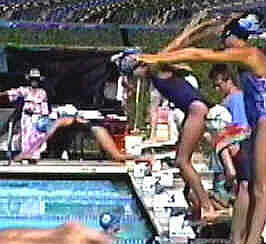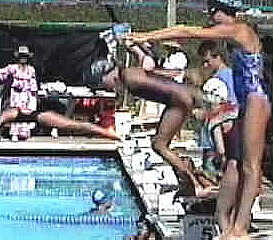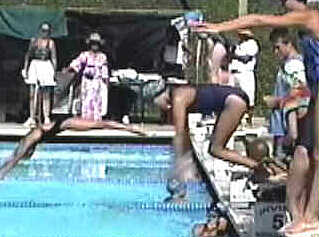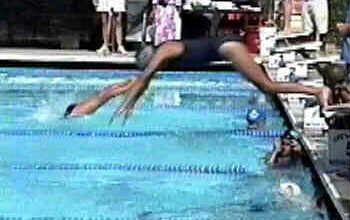

Relay Starts
Why should the relay start be different than any other start? The relay start should not be any different with a few minor exceptions, for the following reasons:
(NOTE: The following photos are NOT powerful starts).
 |
The relay starts usually begin with both arms
up in the air (sometimes pointing at their teammate and tracing
the path of the swimmer in the water as the swimmer gets closer
to the starting block). Sometimes the arms are swung behind the swimmer as we see from the swimmer in the middle of our photo. |
 |
Then at some point, the swimmer on the starting block does a windmill with his/her arms rotating behind him. (This is to help for balance as the swimmer on the starting block begins to lean forward). OR (to supposedly add power to the start from the powerful momentum of the arms). |
 |
Next the windmill progresses forward while the swimmer, with his/her feet still rooted on the block is bending at the knees and squatting in a downward motion. |
|
|
Then the swimmer, which begins to look similar to a rooted tree leaning over with only it's roots keeping it from falling over, slowly falls towards the water. The "leaning tree" syndrome. |
 |
The rotation of the arms slows and then eventually
stops the windmill motion to change to a forward-and-down momentum. At the same time we see the knees are lowering until the lower legs are in a horizontal position. Notice the knees are almost horizontal with the ankles, while the feet are still on the starting block. |
So to review what we just described, the arms have rotated around in windmill fashion, then slowly up and out forward while the legs are going down and horizontal with the water. (Does this really make sense to anybody?) The legs are going down while the arms are going up--the two motions negate each other.